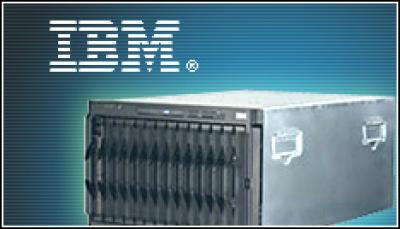IBM has beefed up Power7 server lineup with three new blade servers, and has also released a new edition of its AIX Unix operating system, aimed at SMBs, and an enhanced IBM i 7.1 operating environment.
In addition, Big Blue officials said the beta of its upcoming AIX 7 will be released in the summer.
Power7 Rollout
IBM is continuing an aggressive rollout of products based on the Power7 platform, which IBM introduced in February with four new servers. Though x86 servers continue to grow their share of the overall server market – some estimates say more than 90 of all servers that ship are x86-based – the high-end RISC space still generates about 40 percent of the global server revenues.
Steve Sibley, manager of IBM Power systems, said in an interview that the Unix market is still a vibrant one, and that Big Blue continues to grow the workloads running on their systems, in part due to its ability to take customers away from rivals Hewlett-Packard and Oracle.
HP also is looking to upgrade its high-end server line with Intel’s new Itanium 9300 series “Tukwila” chips, which were released a day after IBM’s Power7 launch in February. In addition, Oracle – which bought Sun Microsystems for $7.4 billion (£4.8 billion) – is working on its new SPARC T3 “Rainbow Falls” processor.
In a report just after IBM’s Power7 launch, Roger Kay, an analyst with Endpoint Technologies Associates, said the high-end of the market is where IBM shines, and not in the number of cores, transistors or threads the processors can run.
“It’s also the sheer amount of work of which a particular core is capable and how many total processors a big server can support,” Kay wrote. “And this arena is IBM’s home turf. It’s these large chips that power the company’s Unix, Linux and i enterprise solutions, one of its key differentiators.”
IBM is less interested in the numbers than in the results, he said.
“While Intel and its allies have tried to paint IBM into a corner on the proprietary nature of its architecture, IBM has danced away from that designation by arguing that what’s under the hood doesn’t matter, at least not to the user,” Kay wrote. “What really counts, the company posits, is that it can deliver, through its proprietary mechanisms, the computing throughput that users want. This concern rises to the fore when you’re Visa International, processing millions of transactions per second around the world. IBM can ensure that the data will get where it needs to, when it needs to, in the (customer’s) required format, and not get lost on its way. This is the arena of big iron.”
 With Power7, IBM is delivering twice the performance and four times the virtualisation capabilities for the same price as its Power6 servers, while consuming half the energy. Power7 offers up to eight cores per chip, with each core able to run up to four instruction threads, enabling each chip to run 32 simultaneous tasks. That includes four times the number of cores and eight times the number of threads per chip than in Power6.
With Power7, IBM is delivering twice the performance and four times the virtualisation capabilities for the same price as its Power6 servers, while consuming half the energy. Power7 offers up to eight cores per chip, with each core able to run up to four instruction threads, enabling each chip to run 32 simultaneous tasks. That includes four times the number of cores and eight times the number of threads per chip than in Power6.
The new Power7 chips continue the performance jumps. The PS700 is an entry-level Power7 blade with four of the cores enabled, while the mid-level PS701 scales to eight cores. With the PS 702, businesses get a system that snaps two servers together for up to 16 cores, IBM’s Sibley said.
The servers can run a host of back-end workloads, including databases. Given the larger memory capacity – up to 128GB per server – the Power7 systems are ideal for virtualisation and consolidation environments, he said.
Smaller Power7 rack systems are due later this year, he said.
The new Power7 blades can run alongside Power6 and IBM x86 blades in the same chassis.
The new blades will be available in June.
AIX 6 Unix
In addition to the servers, IBM also released a new version of its AIX 6 Unix OS. The lower-priced AIX 6 Express Edition is aimed at SMB environments or smaller workloads, with a maximum of four cores per image and 8GB per core.
However, despite the limitations, businesses can run the AIX 6 Express Edition inside a partition on a larger server, Sibley said. This will save them money by not having to pay for new servers to run their smaller workloads, he said.
The company’s IBM i software – once known as i5/OS – will automatically configure itself to take advantage of solid state drives.
AIX 7 will be based on the Power7 platform, Sibley said. By announcing the “sneak peek” of AIX 7 now, IBM is letting customers know that the final version will be available within the next six to nine months, he said.
“It’s giving clients a view of what’s coming in AIX [and that] it’s not very far away,” Sibley said.
A key feature with the new operating system will be the ability for businesses to run AIX 6 on top of AIX 7, he said. Businesses can upgrade to AIX 7, but still run their current applications on AIX 6.
“There’s a real ease of the migration,” Sibley said.
In addition, IBM’s Rational Developer for Power V7.6 gives developers an Eclipse-based environment that supports C/C++ and COBOL. IBM also is unveiling Rational Team Concert for Power Systems Software V2, and Rational compilers for C/C++ and Fortran.




